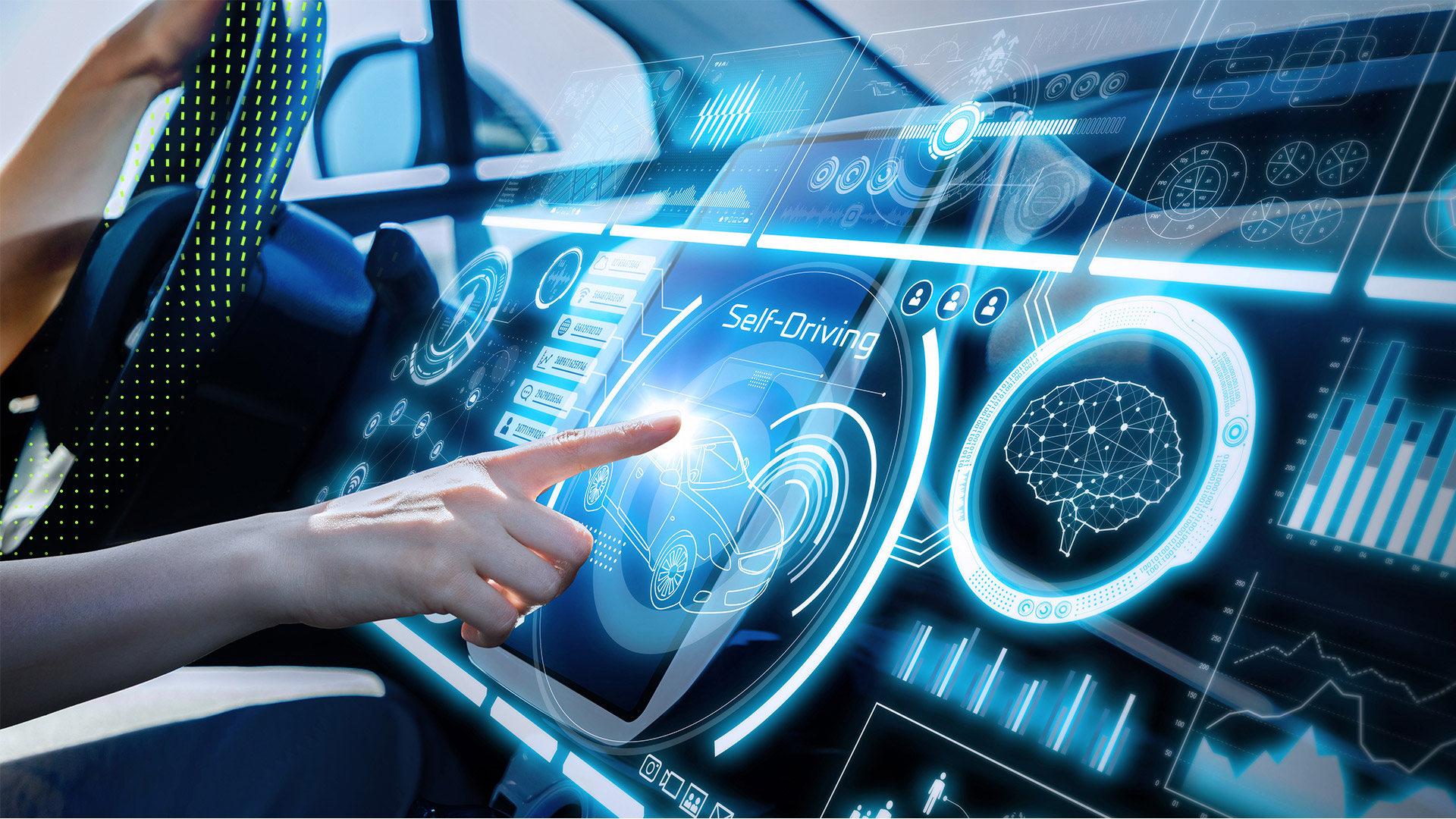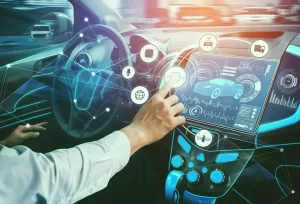
In the rapidly evolving world of technology, the role of AI in autonomous navigation is nothing short of revolutionary. Autonomous systems, once considered a distant dream, are now a reality, thanks to the profound advancements in artificial intelligence (AI). Whether it’s self-driving cars, drones, or unmanned ships, AI is at the core of making autonomous navigation more efficient, safer, and reliable.
Understanding Autonomous Navigation Systems
Autonomous navigation refers to the capability of a vehicle to navigate and operate without human intervention. These systems rely on various sensors, cameras, GPS, and other technologies to perceive their environment, make decisions, and execute tasks. However, the true intelligence behind these systems comes from AI, which enables them to learn from data, adapt to new situations, and make real-time decisions.
The Role of AI in Autonomous Navigation
AI’s role in autonomous navigation is multifaceted. It involves various AI techniques, including machine learning, computer vision, and deep learning, to enhance the capabilities of navigation systems.
- Perception and Environmental Understanding
Autonomous systems must accurately perceive their environment to navigate safely. AI, particularly through computer vision, plays a crucial role in interpreting data from cameras, LIDAR, and other sensors. Machine learning algorithms analyze this data to identify objects, recognize patterns, and understand the environment. This enables autonomous vehicles to detect obstacles, pedestrians, and other vehicles, ensuring safer navigation. - Decision-Making and Path Planning
Once the environment is perceived, AI algorithms are responsible for decision-making and path planning. These algorithms evaluate possible routes, predict future scenarios, and choose the optimal path to reach the destination safely. Reinforcement learning, a subset of AI, is often used in this process, allowing systems to learn from previous experiences and improve their decision-making over time. - Real-Time Adaptation and Learning
One of the most significant advantages of AI in autonomous navigation is its ability to adapt in real time. Autonomous systems must respond to unexpected situations, such as sudden changes in weather, road conditions, or traffic. AI enables these systems to quickly analyze the situation, learn from it, and adjust their behavior accordingly. This adaptability is critical for ensuring safety and efficiency in dynamic environments. - Collaboration and Communication
Autonomous navigation is not just about individual vehicles; it’s also about how these vehicles interact with each other and with the infrastructure. AI facilitates communication between autonomous systems, allowing them to share information, coordinate movements, and avoid collisions. This collaborative approach, often referred to as swarm intelligence, enhances the overall efficiency and safety of autonomous transportation networks. - Improving Safety and Reducing Human Error
One of the primary goals of autonomous navigation is to reduce human error, which is a leading cause of accidents. AI helps achieve this by providing consistent and reliable decision-making, free from human biases or distractions. AI systems can continuously monitor the environment, make split-second decisions, and take preventive actions, significantly enhancing safety.
The Future of AI in Autonomous Navigation
The future of autonomous navigation is closely tied to the advancements in AI. As AI technologies continue to evolve, we can expect even more sophisticated and capable autonomous systems. Innovations in areas like edge computing, 5G connectivity, and quantum computing will further enhance the real-time processing capabilities of these systems, making them faster and more reliable.
Moreover, the integration of AI with other emerging technologies, such as blockchain for secure communication and IoT for enhanced sensor networks, will pave the way for a fully autonomous and interconnected transportation ecosystem. This will not only revolutionize personal transportation but also have a significant impact on logistics, delivery services, and urban planning.

Applications of AI in Autonomous Navigation
Artificial Intelligence (AI) is revolutionizing various industries, and one of the most impactful areas is autonomous navigation. As the demand for self-sufficient vehicles and systems grows, AI is proving indispensable in making autonomous navigation more reliable, efficient, and safe. From self-driving cars to unmanned aerial vehicles, AI applications are at the heart of this technological advancement.
AI in Autonomous Navigation: A Brief Overview
AI in autonomous navigation refers to the use of artificial intelligence to enable vehicles and systems to navigate and operate without human intervention. This involves a combination of machine learning, computer vision, sensor fusion, and real-time data processing to create a robust system capable of understanding and reacting to its environment.
Key AI Applications in Autonomous Navigation
- Self-Driving Cars
One of the most well-known applications of AI in autonomous navigation is in self-driving cars. AI is used to process data from cameras, LIDAR, radar, and other sensors to create a comprehensive understanding of the vehicle’s surroundings. Machine learning algorithms are then employed to make real-time decisions, such as adjusting speed, steering, and braking, to navigate roads safely. AI also helps in predicting the behavior of other vehicles and pedestrians, enhancing the safety and efficiency of autonomous driving. - Unmanned Aerial Vehicles (UAVs)
AI plays a crucial role in the autonomous navigation of drones and UAVs. These systems use AI to process data from onboard cameras and sensors to avoid obstacles, maintain stable flight, and navigate complex environments. AI applications in UAVs also extend to autonomous mapping, surveillance, and delivery systems, where real-time decision-making and adaptation are essential. - Maritime Navigation
Autonomous ships and underwater vehicles are another critical area where AI is making a significant impact. AI in autonomous maritime navigation involves the use of machine learning to process sonar data, GPS signals, and environmental conditions to chart courses, avoid collisions, and optimize fuel consumption. This technology is particularly useful in long-distance shipping, where it can reduce human error and enhance operational efficiency. - Autonomous Trains and Rail Systems
In the realm of public transportation, AI applications in autonomous trains and rail systems are gaining traction. These systems use AI to manage speed, handle complex rail networks, and ensure precise stopping at stations. AI-driven trains can also communicate with each other and with central control systems to optimize traffic flow, reduce energy consumption, and improve safety. - Autonomous Agriculture Vehicles
AI in autonomous navigation is also transforming the agricultural sector. Autonomous tractors and harvesters equipped with AI can navigate fields, plant seeds, apply fertilizers, and harvest crops with minimal human intervention. AI applications in this field focus on optimizing routes, adjusting to varying field conditions, and maximizing efficiency. This not only reduces labor costs but also increases productivity. - Autonomous Delivery Systems
With the rise of e-commerce, AI-driven autonomous delivery systems are becoming increasingly popular. Ground-based delivery robots and aerial drones use AI to navigate urban environments, avoid obstacles, and deliver packages to precise locations. AI applications in this area focus on optimizing delivery routes, managing fleet operations, and ensuring the safety and security of deliveries. - Search and Rescue Operations
AI in autonomous navigation is proving invaluable in search and rescue missions. Autonomous vehicles, both aerial and ground-based, can be deployed in disaster-stricken areas to search for survivors, deliver supplies, and assess damage. AI-driven systems can navigate through debris, map out dangerous zones, and operate in environments that are too hazardous for humans, significantly improving the efficiency and effectiveness of rescue operations.
Future Prospects of AI in Autonomous Navigation
The future of AI in autonomous navigation looks promising, with continuous advancements driving innovation across various industries. As AI technologies become more sophisticated, the applications in autonomous navigation will expand, enabling more complex tasks and improving the overall safety and reliability of autonomous systems.
Emerging technologies like 5G, edge computing, and quantum computing will further enhance the capabilities of AI in autonomous navigation, enabling faster data processing and more responsive systems. Additionally, the integration of AI with blockchain and IoT will provide secure and interconnected autonomous networks, revolutionizing transportation, logistics, and beyond.


